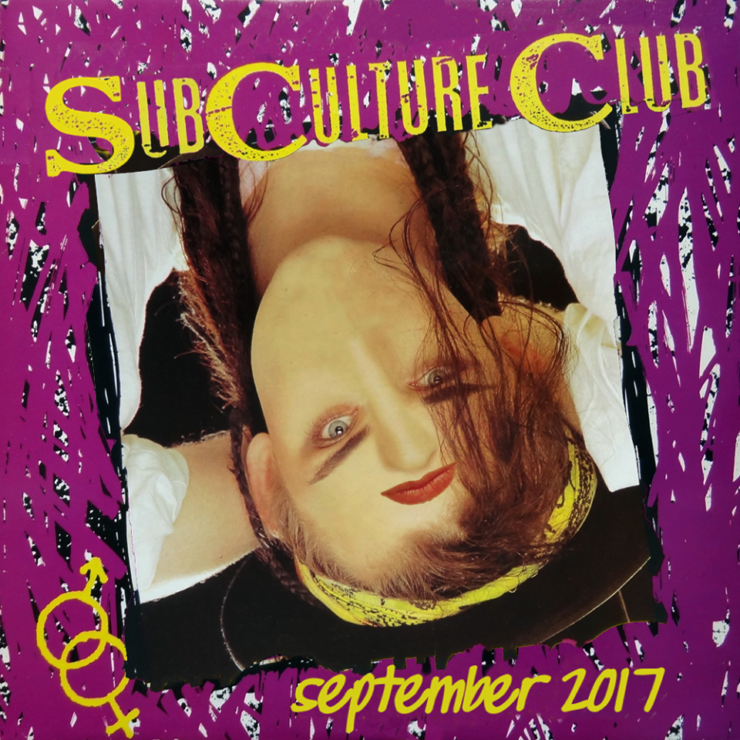Looking back on the legacy of Subculture Club

This February, the Victoria music scene’s not-so-secret best-kept secret, Subculture Club, closed the doors of its physical location permanently.
“The concern became … if we [take over the lease for the club], what we’re really going to be doing is trying to pay the rent each month and that’s not really what we set out to do.”
These are the words of Luis Gonzales, one of the organizers behind this year’s effort to continue the project of Subculture Club. Under the non-for-profit “anameandalogo,” Gonzales and others held two shows in the fall in an effort to raise funds for the club. He is hesitant to assign himself a role within the collective, saying that part of the point is that they don’t have roles.
“My role… was just trying to open up that conversation, like ‘hey do we want to do this?’” Gonzales also organized the incorporation of their collective as a non-profit.
Gonzales cites Steve Bailey as the founder and driving force behind Subculture Club. Gonzales and others came in later with the intention of continuing the community and holding space for artists in Victoria.
Talking about his role at Subculture Club, Bailey says that it was to “conceptualize it, fund it, [design] it, [build] it, [do] all the construction.”
“Swept the floors, it was just everything… that’s why it was pretty hard to keep up,” said Bailey.
“I’m just a guy who has a job and a family and an obsession with music and seeing live music, and that obsession just turned into the idea of making a space.”
In founding Subculture Club in 2017, Bailey’s goal was “to have a safe, all-ages space that would be … at no cost to put on a show.” Bailey speaks with passion about creating a space that was “just kind of focusing on people who didn’t fit in well,”and something that was “different than what seemed to be available.”
Bailey’s long-time involvement in the Victoria music scene — playing in his first Victoria punk band, the Neos, in the mid 1970’s — and his entrepreneurial experience running a security systems installation business equipped him to pursue his goal of offering a free-to-play space for newer and touring artists.

Bailey and Subculture Club Co-Founder Rob Nesbit’s passion for inclusivity and accessibility is clearly reflected in the fond memories that folks like Gonzales have of their first show at Subculture Club.
“I remember the first time I went to Subculture Club very distinctly because I went to see some show and it was so empty but clearly … such a huge investment had gone in,” said Gonzales. “The show was great … I felt like I had found a secret. I think essentially that’s what the underground provides, that sense of being special… it’s more about you.
“It was built by someone who wasn’t trying to be cool.”
When asked to share some favorite memories of Subculture Club, Gonzales is clearly pressed to narrow it down to just a few.
“We had one show where we served banana splits outside.”
Talking to Bailey about his memories of the club, he reflects on the moments he and Nesbit shared in the sound booth taking in music that was “truly creative,” — unpolished, passionate, and unencumbered by pressure. Bailey also reminisces kindly about his first time meeting Gonzales.
“Luis is the perfect example of what I always hoped the club would be. He approached me when he was 17 or something, and pitches to me in this very serious way how he’d like to put on this show.”
However, both Bailey and Gonzales concurred that it wasn’t all good times in abundance. For Bailey, the challenge in running an all-ages venue came in keeping the space drug and alcohol-free.
“It was a huge, huge battle,” recalls Bailey.
Bailey concedes that he and other organizers were “asking ourselves every single weekend — do we want to keep doing this? ‘Cause someone’s going to hurt themselves and we are going to be in a lot of trouble.”
Now moving forward under the anameandalogo and aphysicallocation monikers, Gonzales says he is cautious to outline any specific goals.
“I kind of like not having a lot of pressure, I feel like that’s an important part of the point that we’re trying to make.”
He does surrender that the collective is hoping to do at least one show a month.
It is clear that anameandalogo isn’t concerned with marketing or branding. In a time where we are seeing the “McDonaldisation” of nightclubs — big branded names with generic experiences — it is reassuring to hear that folks like Bailey, Gonzales, and the rest of those involved with anameandalogo and the now former Subculture Club care deeply about providing space for the artistic envelope to be pushed in an affordable and inclusive community.








